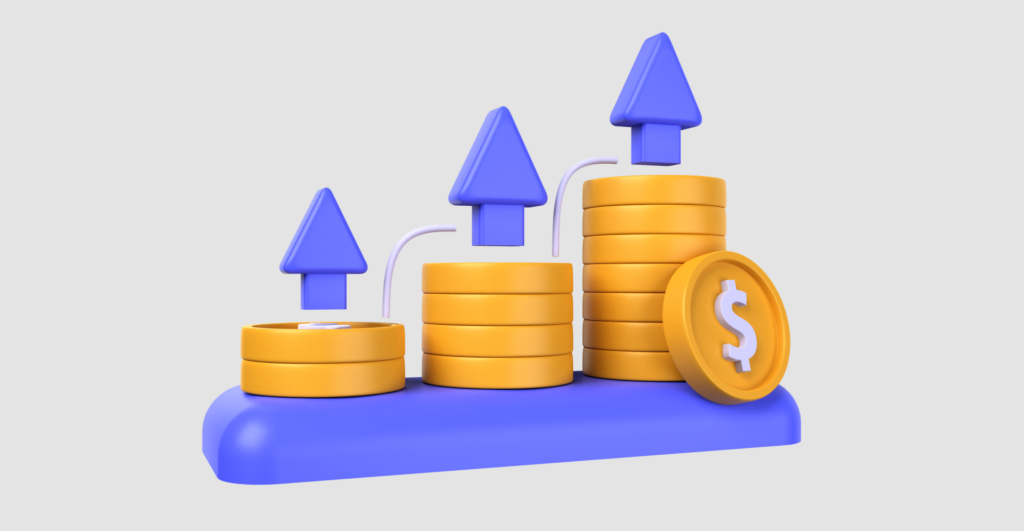Since the inception of the software-as-a-service (SaaS) market, tiered pricing has reigned as one of its best-suited pricing structures for the industry. This superiority is well warranted.
Tiered pricing models take a dynamic approach that segments services into distinct packages, each priced according to the value and features it provides. Giving users the flexibility to choose a plan based on their requirements and budget constraints broadens the customer base and informs a deeper understanding of customer behavior. These insights can then be used to refine product offerings, optimize strategies, and boost user engagement.
This article is everything a SaaS provider and subscription-based business needs to know about the tiered pricing structure, how to implement it, and what’s required to extract the most value from this solution.
TL;DR
- The tiered pricing model has long been held as one of the best-suited pricing structures for the SaaS industry. The model is designed to cater to a diverse range of customers with varying needs and budgets, enabling businesses to target different market segments more effectively.
- Tiered pricing models help businesses keep pace with changes by leveraging a flexible strategy that understands and meets diverse customer needs while incentivizing them to move to higher tiers.
- With regular iterations, informed by customer feedback and data, tiered pricing proves a powerful method to scale and adapt in the fast-paced SaaS market.
What is the Tiered Pricing Model?
Tiered pricing is used extensively in the SaaS industry to offer products or services at different price points, with each tier offering a distinct set of features, functionalities, or usage limits. This model is designed to cater to a diverse range of customers with varying needs and budgets, enabling businesses to target different market segments more effectively. There are no rules on how many tiers a company can offer. Three-tiered pricing was very common, but many large SaaS companies now have 4 or more.
Key Components of the Tiered Pricing Model
The tiers
Pricing tiers are distinct categories within a pricing strategy, each designed to offer different levels of service, features, or usage thresholds at a particular price point. The objective is to segment the product or service offerings in a way that customers can easily choose the option that best fits their needs and budget.
Each tier is crafted to provide increasing value, often reflected in the escalating price levels. This encourages customers to move from lower tiers to higher tiers as their requirements grow.
How tier pricing is defined
When defining the structure for a tiered pricing model, you need to ensure your tiers align with both your business goals and customer expectations. Some of the considerations to keep in mind are:
- Market segmentation: Know the diverse needs and preferences of the target market segments.
- Competitive analysis: Evaluate how competitors structure their pricing.
- Cost structure: Consider the cost of delivering each tier’s features or services, ensuring that each tier is priced to maintain profitability.
- Value proposition: Offer a clear value proposition, with benefits and features that justify the price difference between tiers.
- Customer feedback: Incorporate feedback from existing or potential customers to guide adjustments in tier offerings.
Benefits of Tiered Pricing
Tiered pricing offers several compelling benefits that make it an attractive strategy for revenue growth and customer satisfaction:
Flexibility and choice for customers
Customers appreciate the ability to choose a lower or higher price product or service tier that matches their specific needs, which means they can scale up or down based on usage or requirements.
This flexibility can increase customer retention, satisfaction, and loyalty.
Increased revenue opportunities
Providing pricing options at various price points enables you to capture a wider customer base and use incentives to encourage existing customers to upgrade to higher tiers.
With the price points, you won’t alienate or price out customers who may not be ready for your top-tier offerings. As such, you broaden potential audience while paving the way for upselling and cross-selling opportunities.
Better market segmentation
Tiered pricing allows companies to effectively segment their market and tailor their offerings to different customer groups, enhancing marketing efficiency.
Since your customers are already segmented by tier, it’s easier to send tailored communications or create offerings based on their specific needs.
Enhanced customer acquisition and retention
With clear options available, potential customers are more likely to find a suitable entry point, while existing customers have compelling reasons to stay and possibly upgrade.
If your tiers and product features are structured properly, you can give your customers room to grow and ensure your business scales with them.
Strategic upselling
We alluded to this earlier, but it’s worth repeating: tiers create natural pathways for upselling customers as they outgrow their current tier. With tiered pricing, they can easily see the benefits of moving to the next level.
Implementing the Tiered Pricing Model in SaaS
Adopting a tiered pricing model can significantly impact market presence and revenue, but its success hinges on strategic implementation.
Steps to design a tiered pricing strategy
Let’s take a hypothetical.
Imagine a SaaS company called CloudTech Solutions. They specialize in cloud storage services and are moving from a single, one-size-fits-all pricing model to a tiered pricing structure. This transition involves a thorough analysis of their customer base to understand different usage patterns and needs, leading to the creation of several tiers. These tiers range from a basic plan with essential features suited for individual users or small teams to premium plans offering advanced functionalities for large enterprises requiring extensive storage and security features.
The steps to get here included:
- Market research: Understanding competitors, potential customers, and the overall market landscape.
- Segmentation: Identifying distinct customer segments within the target market and understanding their specific needs, preferences, and willingness to pay.
- Value proposition: Defining the unique value proposition for each customer segment, focusing on how the service addresses their specific challenges or goals.
- Feature selection: Choosing which features or services to include in each tier, ensuring they align with the identified value propositions and customer segments.
- Pricing: Determine the pricing for each tier, considering the cost to serve, competitor pricing, and perceived value to the customer.
- Feedback and testing: Solicit feedback from potential customers on the proposed tiers and pricing and adjust based on their input and willingness to pay.
In addition to establishing the tiered services, the transition process includes updating their billing system, marketing materials, and customer support processes to cater to the new pricing structure.
Customer segments and value propositions
To understand customer segments and value propositions, businesses must:
- Identify key customer personas and their characteristics
- Understand the challenges, goals, usage patterns, and metrics of each segment
- Craft value propositions that resonate with each segment, highlighting the benefits and outcomes they can expect from the service.
Feature-based tiers and their limitations
When defining feature-based tiers, it’s important to strike a balance between offering value at a lower price while also encouraging upgrades. Consider:
- Which features are essential for the basic tier and which can be reserved for premium tiers
- How to limit usage (e.g., number of users, data storage limits) across tiers to create clear distinctions
- The potential for feature bloat in higher tiers and how to maintain a clear value proposition for each tier.
Pricing strategies for each tier
Developing pricing strategies for each tier involves several considerations to ensure alignment with customer expectations and business sustainability:
- Cost-plus pricing: Starting with the cost of service delivery and adding a markup.
- Value-based pricing: Setting prices based on the perceived value to the customer rather than the cost to serve.
- Competitive pricing: Aligning your pricing with that of competitors, with adjustments based on your service’s unique value proposition.
Tiered pricing examples
Exploring real-life examples can provide valuable insights into successful tiered pricing templates. Here are just a few of the thousands of examples available:
JustLogin
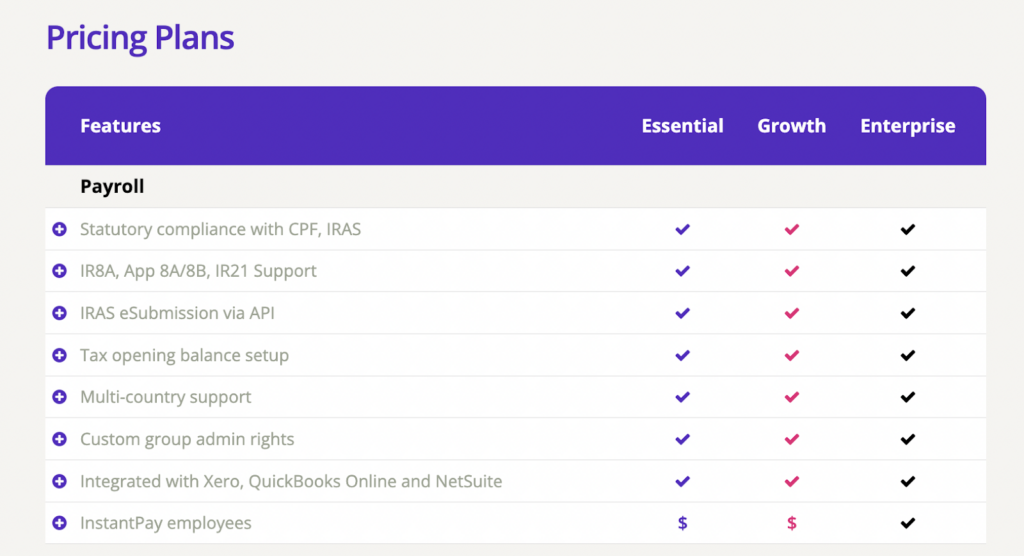
JustLogin uses Stax Bill to implement various pricing strategies—from tiered to stairstep and volume.
This gives the JustLogin team more pricing flexibility, so salespeople can structure the right deals for customers.
Salesforce
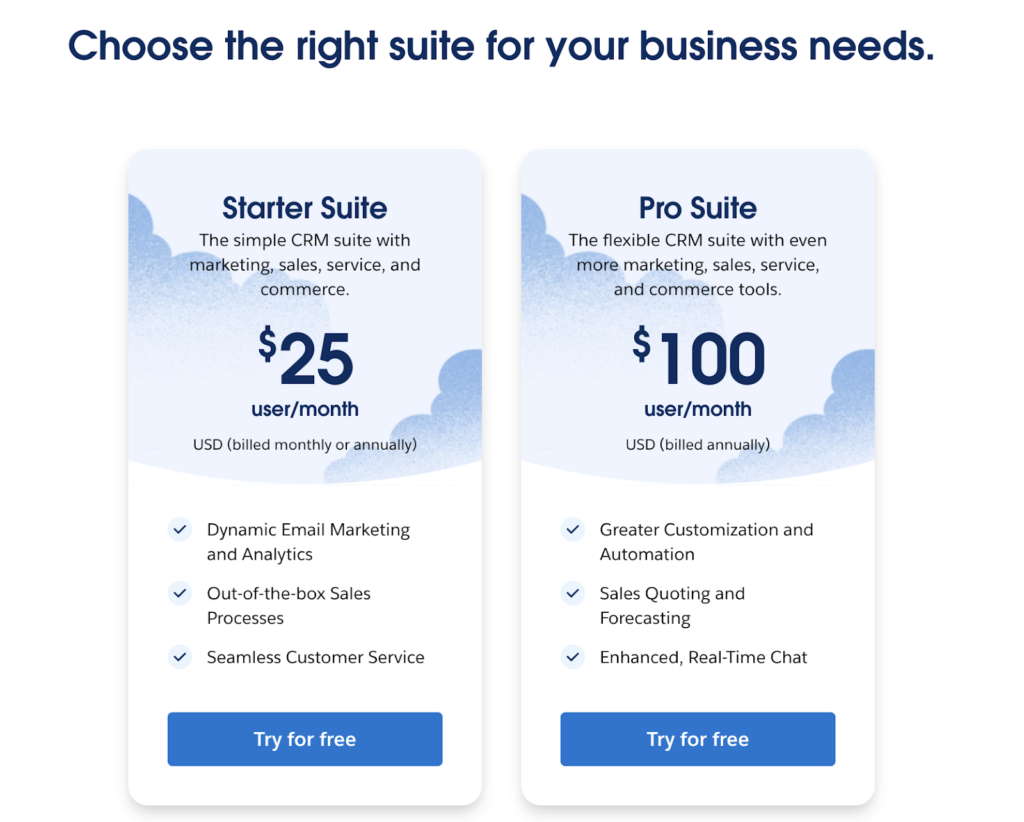
Salesforce offers several tiers of pricing, each with its own set of features and capabilities designed to suit businesses of varying sizes and needs. Their different pricing tiers include a basic CRM offer and a variety of other higher tiers that include more advanced features.
Adobe Creative Cloud
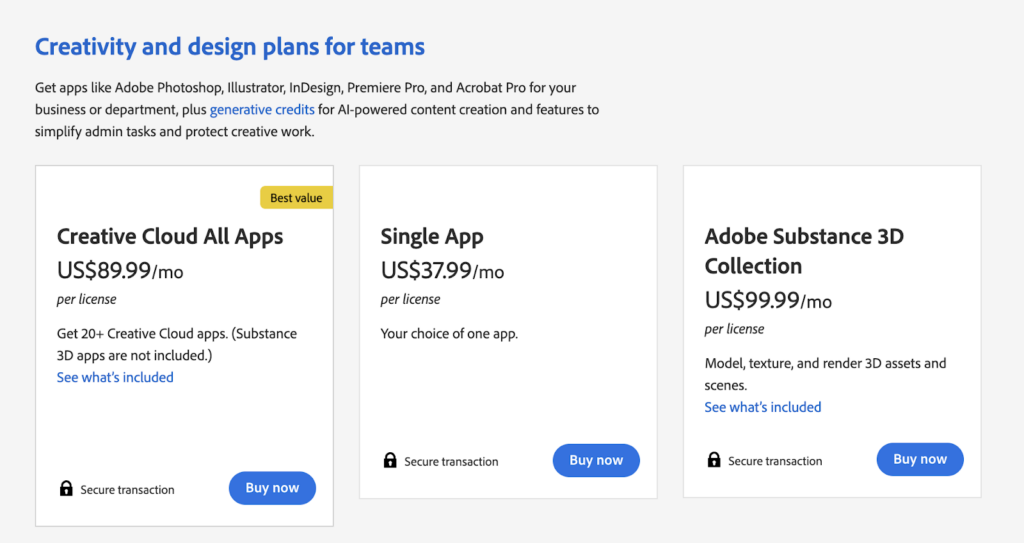
Adobe’s tiered plans start with individual applications like Photoshop and Illustrator and then increase to tiers for bundles for photographers, designers, and enterprises.
Slack
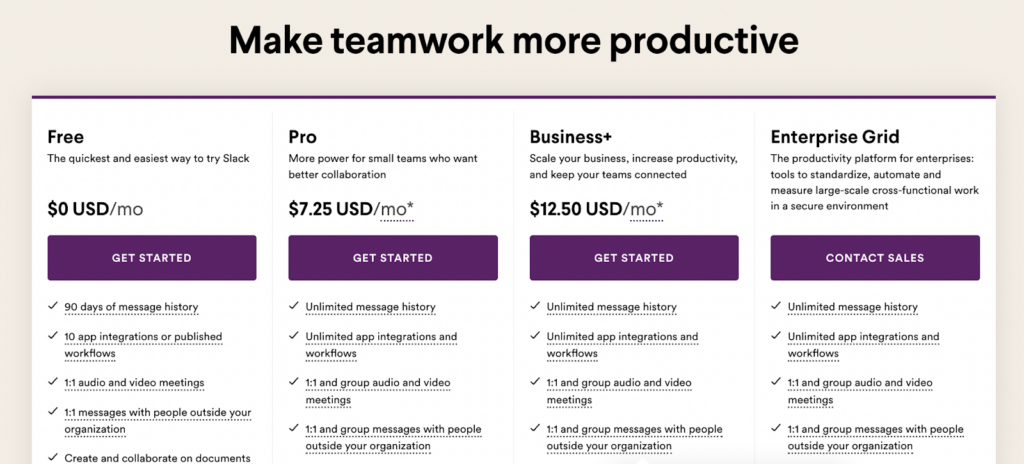
Slack starts with a freemium offering with limited features and then has several paid tiers that offer additional functionalities.
Best Practices for Tiered Pricing in SaaS
To fully harness the potential of tiered pricing, it’s crucial to adhere to best practices that ensure the model’s effectiveness and sustainability. Businesses must consider:
How to communicate the value of each tier
Effectively communicating the value of each pricing tier is fundamental to attracting and retaining customers. Here are strategies to achieve clear communication:
- Clear and concise descriptions: Ensure that the features and benefits of each tier are described clearly and concisely, avoiding technical jargon that may confuse potential customers.
- Highlight differentiators: Emphasize what makes each tier unique and why a customer might choose one over another, focusing on the value and outcomes they can expect.
- Use visual aids: Use comparison charts or tables to help customers easily understand the differences between tiers and decide which best fits their needs.
- Include success stories: Share case studies or testimonials from customers in each tier to illustrate real-world applications and benefits.
Techniques for upselling and cross-selling
Upselling and cross-selling are crucial for increasing customer lifetime value and maximizing revenue. Implement these techniques with precision:
- Personalized recommendations: Use customer data to offer personalized upgrade recommendations that align with their usage patterns and business growth.
- Free trials for higher tiers: Offer free trials of higher tiers to let customers experience the additional value firsthand, increasing the likelihood of an upgrade.
- Exclusive offers: Create exclusive offers or discounts for existing customers to move to a higher tier, framing it as a reward for their loyalty.
- Educational content: Provide content that educates customers on the benefits of using more advanced features available in higher tiers.
Adjust pricing tiers based on feedback and data
The market’s needs and the product’s value proposition will evolve over time, necessitating pricing tier adjustments. Here’s how to stay adaptable:
- Monitor customer feedback: Regularly gather and analyze customer feedback regarding pricing and features, looking for patterns that suggest necessary adjustments.
- Analyze usage data: Review usage data to identify which features are most and least popular and consider how this impacts the perceived value of each tier.
- A/B testing: Experiment with different tier structures and features for new customers to see what combinations yield the best acquisition, retention, and conversion rates.
- Stay informed on market trends: Keep an eye on industry trends and competitor pricing strategies to ensure your tiers remain competitive and relevant.
Tiered Pricing vs Volume Pricing
Tiered pricing and volume pricing are both popular strategies for SaaS businesses, but they cater to different customer behaviors and billing preferences.
Volume pricing, or usage-based pricing, adjusts the price based on the quantity purchased, rewarding customers with lower unit costs as their usage increases, making it ideal for products or services consumed in variable quantities.
Volume-based pricing example
A classic example of volume pricing is seen in cloud storage services like Amazon Web Services (AWS), where storage costs decrease as the amount of data stored increases. This model encourages more usage by offering better rates for higher volumes, appealing to both small and large-scale users with fluctuating needs.
Tiered Pricing vs Freemium Pricing
Freemium pricing introduces a basic product or service level for free, with the option to pay for advanced features or capabilities. The key difference lies in the freemium model’s strategy to attract users with no upfront cost, betting on their eventual conversion to paid tiers for more functionality.
Freemium pricing example
Dropbox, a cloud storage service, is a classic example of a freemium model. It offers a free basic account with limited storage space, encouraging users to upgrade to premium plans for more storage and additional features like advanced sharing controls and enhanced security options. This strategy effectively draws in users by offering immediate value with no entry barriers, creating opportunities for upselling.
Tiered Pricing vs Pay-as-You-Go Pricing
Pay-as-you-go pricing charges users based on their actual usage of a service or product without requiring them to commit to a package. Pay-as-you-go is highly flexible and can be more appealing to users with unpredictable usage patterns, as it directly aligns costs with consumption.
Pay-as-you-go pricing example
Google Cloud Platform (GCP) employs a pay-as-you-go pricing model for its cloud services, where users are billed for the specific resources they consume, such as compute instances or data storage, allowing for flexible and scalable cloud infrastructure costs.
Tiered Pricing vs Flat-Rate Pricing
Flat-rate pricing offers a single price for access to all features or services. Flat-rate pricing simplifies the decision-making process for customers and is straightforward to administer but lacks the flexibility to meet diverse customer needs or encourage upgrades.
Flat rate pricing example
Project management and team communication software Basecamp uses a flat-rate pricing model, offering a single pricing plan that grants access to all features, regardless of the size of the team or the number of projects. This model is attractive for its simplicity and predictability, appealing to business owners who prefer straightforward pricing without the complexities of tiered options.
Conclusion
When it comes to SaaS, scalability and adaptability are essential to staying competitive.
With regular iterations—informed by customer feedback and data—tiered pricing can be a powerful method to adapt in this fast-paced market.
Stax Bill provides SaaS businesses with the tools to efficiently manage and implement tiered pricing models. Through its platform, companies can easily set up and customize various pricing tiers, track customer usage, and automate billing processes. This functionality supports SaaS businesses in accurately aligning their pricing strategies with customer value and usage patterns, facilitating smoother financial operations and insights into revenue performance.
FAQs about Tiered Pricing
Q: What is a tiered pricing?
Tiered pricing is a pricing strategy commonly used by Software as a Service (SaaS) companies, where different levels of a product or service are offered at varying prices. Each tier offers a specific set of features, capabilities, or usage limits, allowing customers to choose the option that best fits their needs and budget. This model is designed to cater to a wide range of customers, from small startups to large enterprises, by providing flexible pricing options.
Q: What are the advantages of using tiered pricing?
Tiered pricing increases your revenue opportunities. It enables you to capture a wider audience, from budget-conscious users to those willing to pay more for premium features. Tiered pricing also encourages customers to start with a lower-tier and upgrade as their needs grow, improving customer retention rates.
Q: What is another name for tiered pricing?
Tiered pricing is also known as volume pricing or multi-tier pricing. These terms highlight the strategy’s focus on offering different pricing levels based on the volume of use, features, or the number of users.
Q: How is tiered pricing calculated?
Tiered pricing is calculated based on the value each tier offers to the customer. SaaS companies typically analyze market demand, cost of service delivery, competitor pricing, and the perceived value of features within each tier to determine price points. Pricing can be based on factors such as the number of users, amount of storage, access to premium features, or level of customer support.
